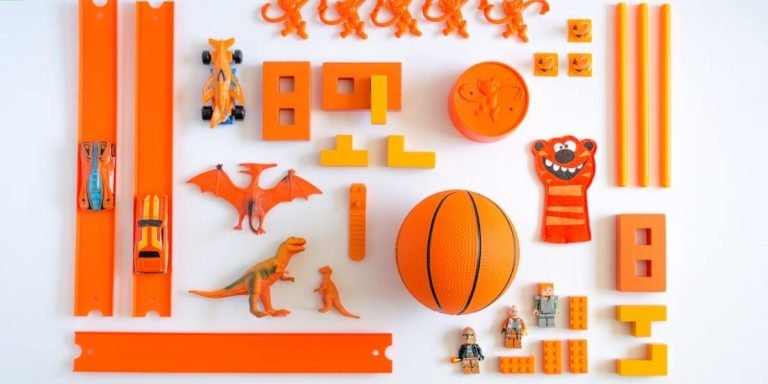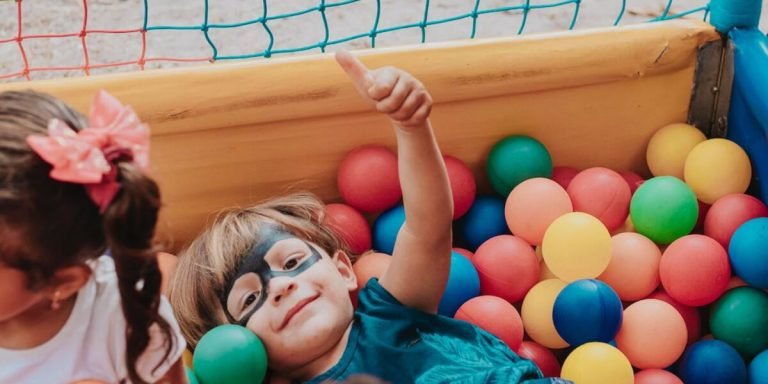Kinesthetic Learner Meaning: An Insight into Active Learning Styles in Children
Understanding the different learning styles of children can be a game-changer in their education journey. One notable style is kinetic or physical learning, often referred to as kinesthetic learning. Grasping the “kinesthetic learner meaning” plays a crucial role for educators and parents alike, transforming how they approach teaching concepts and ideas.
Kinesthetic learners absorb information best when they are actively engaged. This might involve moving around, handling objects or physically participating in an activity based on what’s being taught; hence comes our focus – Activity Based Learning (ABL). Kinesthetic strategies foster this engagement by turning abstract lessons into tangible experiences that stick with students long term.
Did you know?
Did you know that kinesthetic learners make up about 5% of the population? They thrive on physical activities and hands-on tasks to absorb information, a learning style often underrepresented in traditional classrooms.
Understanding Kinesthetic Learning: Embracing Movement in Education
Kinesthetic learning, or tactile learning, is a teaching method that capitalizes on a child’s natural tendency to learn while moving and interacting with their surroundings. In essence, it involves the use of physical activities to drive home educational concepts. This sensory approach not just makes lessons more engaging for young learners but also supports better retention of information.
When integrating technology into education in 2023, incorporating elements beneficial for kinesthetic learners can significantly elevate the effectiveness of digital classrooms. Harnessing advances like Virtual Reality (VR), Augmented Reality (AR), and interactive gaming technologies could be key shifts towards making online pedagogy more inclusive – catering precisely to youngsters hungry for hands-on experiences as part of their everyday curriculum.
Activity-based learning fits snugly within this technological framework designed around kinesthetic learner meaning – offering practical tasks which facilitate active participation from pupils rather than passive consumption of content. For instance: an AR-enabled science experiment exhibiting reactions between various substances; or a VR history tour enabling kids to physically ‘walk’ through eras gone by! Coupling such dynamic tech tools with kinesthesia-driven methodologies might well revolutionize our conventional understanding about 21st century childhood education.
Defining the Kinesthetic Learner: Characteristics and Needs
Kinesthetic learning is a concept that has been around for quite some time but only recently gained widespread attention. To fully comprehend the kinesthetic learner meaning, we need to delve into its core attributes and necessities.
For starters, what does it mean to be a kinesthetic learner? Well, these individuals learn best through physical activity. Whether they’re running their hands over an object or engaging in active play – movement is at the heart of their learning process.
They prefer practical experiences where they can manipulate materials instead of listening to lectures or reading text alone.
In our increasingly digital age, integrating technology appropriately becomes crucial towards serving this group of learners effectively.
Consider using apps designed specifically for activity-based learning as well as tools like virtual reality headsets which could allow students to explore different environments without needing any transportation!
The needs are identical – activities requiring motor skills dominate their educational environment. Be wary not just about cognitive development but also bodily-kinaesthetic intelligence when designing lessons for them since traditional schooling might fall short on this front most times.
They may struggle with focusing during lectures due to constant desire for motion and engagement hence becoming restless easily if forced into stationary positions; so letting them move while studying- whether pacing back-and-forth or bouncing lightly on an exercise ball can lead better results acadically .
Lastly remember each child’s needs vary widely regardless type(s) preferred ways processing information therefore requires creativity incorporating multiple strategies ensuring success classroom scenarios+. How do you plan support these kinds learners your setting?
The Science Behind Activity-Based Learning
Activity-based learning, or as some might know it, kinesthetic learning is a big buzzword in today’s educational sector. However, what does “kinesthetic learner meaning” actually signify? In simple terms, the word kinesthetic refers to our sense of physical movement and body awareness.
Thusly defined, a kinesthetic learner learns best through physical activities rather than sitting still and listening passively.
So where does technology integration come into play here? Let’s delve deeper.
In 2023 we find ourselves living in an unprecedented era when rapid advances in digital technology have transformed many sectors – education being one such prime area. With virtual reality (VR) simulations for science experiments or gamifying math problems with augmented reality (AR), the innovative blend of active engagement and advanced tech has brought us face-to-face with unique approaches towards activity-based learning.
The science behind this method lies primarily within its name: “activity”. When children are physically engaged during class time – be that by working directly on iPads solving challenging puzzles or up running around utilizing motion-sensor gadgets for quizzes – they tend to learn better because their mind remains stimulated throughout these processes.
Research supports this claim; studies reveal how the brain retains information more efficiently if learned via practical applications compared against traditional rote memorization methods followed extensively till date.
Implementing Activity-Based Strategies for Kinesthetic Learners
In an age defined by technological advancements, the integration of technology in education is essential. This especially holds true for catering to different types of learners, specifically kinesthetic learners. Kinesthetic learning involves a hands-on approach where students learn through physical activities rather than reading or listening to lectures alone.
The term “kinesthetic learner meaning” refers to those who grasp concepts better when they perform related actions or tasks. These individuals cherish engagement and exploration as key elements in their educational journey. With this knowledge at hand, implementing activity-based strategies can thus prove effective for ensuring that our teaching methodologies align with these learning preferences.
Integrating technology into activity-based methods has now opened up new avenues in steering the course of kinesthetic pedagogy towards greater success rates and enhanced student participation levels across various academic contexts worldwide.
For instance, introducing virtual reality (VR) tools allows subjects usually confined within textbook pages – like History or Science – transform into experiences capable of transporting children straight onto battlegrounds from centuries past or deep inside body cells! Gesture-control tech gadgets further amplify hands-on experiments with real-time responses based on movements made by young scholars themselves.
Hands-On Activities to Enhance Physical Engagement
Understanding the kinesthetic learner meaning is pivotal in crafting effective hands-on activities that can enhance physical engagement. Kinesthetic learners thrive when they are able to use their bodies and senses as part of the learning process.
Teachers, parents, and educators can integrate technology into activity-based learning to support these learners. In 2023, technological innovation keeps revolutionizing global education landscapes. The integration could include:
- Interactive whiteboards
- e-Books and online resources
- Educational software and games
- Virtual reality (VR) environments
- Augmented reality (AR) tools
- Learner response systems
Firstly, consider virtual reality (VR) engagements which provide immersive experiences that appeal to our sense of touch – a key aspect suitable for kinesthetic learners who learn best through moving and doing things physically.
Secondly, interactive digital simulations could be employed. These platforms offer engaging scenarios where children act out roles or solve puzzles using both cognitive skills and motor abilities.
Thirdly, augmented reality (AR) games offers an avenue worth exploring too! AR combines real-world elements with computer-generated ones thus providing tactile experiences useful for enhancing movement-based learning strategies.
Lastly but crucially important too- include gamification by introducing educational video games designed around curriculum objectives – think Minecraft’s Education Edition!
Classroom Layouts Conducive to Movement and Interaction
Understanding the central kinesthetic learner meaning is crucial to designing environments conducive to their learning style. That’s where classroom layouts come in, offering a cocktail of movement and interaction possibilities that many modern educators swear by.
Activity-Based Learning (ABL) has proven extremely effective for children identified as such learners. It draws directly on technology integration in education, making it possible for these kids who find sitting still an uphill task to engage with active educational content while promoting understanding through direct experience.
The seating arrangement also calls for innovation – say goodbye to traditional rows and usher in circular arrangements facilitating peer interactions, forming fluid groups which are perfect platforms encouraging activities and building social skills simultaneously.
Moreover, ABL brings out-of-classroom elements inside too! Did someone mention physical exercises during lessons? Employing mini exercise routines between classes can wield twin benefits: satiating kinetic needs alongside keeping them focused throughout longer periods!
Incorporating technology isn’t mere decoration either but integrated into curricula seamlessly enhancing pedagogical practices & enriching students’ experiences without alienation involved earlier versions presented.
Measuring Outcomes of Kinesthetic Learning Approaches
Understanding the term “kinesthetic learner” is a pivotal point when we discuss about education technology integration. Essentially, kinesthetic learners are individuals who absorb and retain information best through physical activities. The rise of digital tools in classrooms has provided an opportunity for educators to enhance teaching methodologies suited to these types of learners.
One key area where ed-tech shines is its ability to accurately measure outcomes resulting from activity-based learning practices favored by kinesthetic learners. Traditional forms of assessment often struggled with capturing the full spectrum of skills fostered through this hands-on approach – qualities such as teamwork, problem-solving abilities, or creative thinking might have been overlooked in paper-and-pen tests.
However, today’s tech-infused educational landscape allows teachers not only to implement more interactive lessons but also capture data related directly to each student’s engagement level and understanding during these activities – creating a comprehensive picture that goes beyond traditional marking schemes.
The use of virtual reality (VR), augmented reality (AR), customizable apps and games can provide valuable feedback on how well students perform tasks or solve problems within simulated environments mirroring real-life scenarios. Such technological advancements supplement efforts towards catering education better for each child’s unique needs including those leaning towards active participation style like our kinetic learners; thus making it possible for every individual potential out there be nurtured optimally amidst technologically driven global progression.
Assessing Academic Progress in a Kinesthetically-Focused Curriculum
In the educational landscape, it’s vital for educators to understand how learning styles can shape a child’s academic journey. One such style that is gaining attention in childhood education circles is kinesthetic learning.
Kinesthetic learner meaning revolves around learnings who thrive by performing physical activities rather than listening to lectures or reading text-based materials. Hence, for these learners, activity-based learning approaches are more effective and engaging.
Undeniably, technology integration in education has helped tremendously in catering to different types of learners including those with kinesthetic inclinations. The use of virtual reality (VR), augmented reality (AR), and various interactive platforms have significantly transformed traditional teaching methods into something children find interesting and beneficial.
To measure outcomes when incorporating a kinetic-focused curriculum, we need to track progress and identify areas needing improvement. We can assess academic progress through the following ways:
1) **Observation:** Keeping an eye on students during activity sessions provides insights into their involvement level and understanding capacity from their actions.
Evaluating Student Engagement and Retention Rates
The continuous evolution of pedagogical approaches has brought forward the concept of kinesthetic learning. This active style encourages students to learn by doing, physically engaging with material for a more immersive educational experience. But what is the kinesthetic learner meaning?
Essentially, it implies that some individuals absorb knowledge better when they use their bodily movements and senses during lessons.
As we integrate technology into education in 2023, one important aspect we need to evaluate is how these innovative methods affect student engagement and retention rates – two pivotal metrics in measuring the success rate of any teaching approach.
Kinesthetic learners typically find classroom settings confining and traditional lecturing methods uninspiring. In incorporating activities as part of lesson deliverance not only awakens curiosity but also enthuses participation among all types of learners – not just those who are intrinsically motivated.
With technological advancements such as Virtual Reality (VR) or Augmented Reality (AR), educators can now create real-life simulations that allow children explore nature’s wonders without leaving school premises or travel back through time periods providing them an enriching historical perspective otherwise impossible through textbooks reading alone. The thrill associated with virtual interaction significantly boosts students’ drive to participate actively thus increasing overall class productivity.
Essentially experiential platforms like VR and AR imbue your typical textbook diagrams with life rendering concepts easier understand yet difficult forget.
Conclusion
Understanding the kinesthetic learner meaning can reshape how you approach your child’s educational journey. It is an engaging dialogue that puts a spotlight on their inherent strengths and provides tools to build on them further. As parents and educators, acknowledging these learning styles not only enhances classroom engagement but also fuels independent reasoning abilities in children.
This broad perspective into active learning approaches just scratches the surface of childhood education intricacies. We urge you to explore more resources available on our website where we delve deeper into diverse subjects like toddler curriculums, specialized teaching methods, or parental support for home schooling among others! Unraveling these insights will surely equip you better in nurturing young minds with patience and effectiveness.







